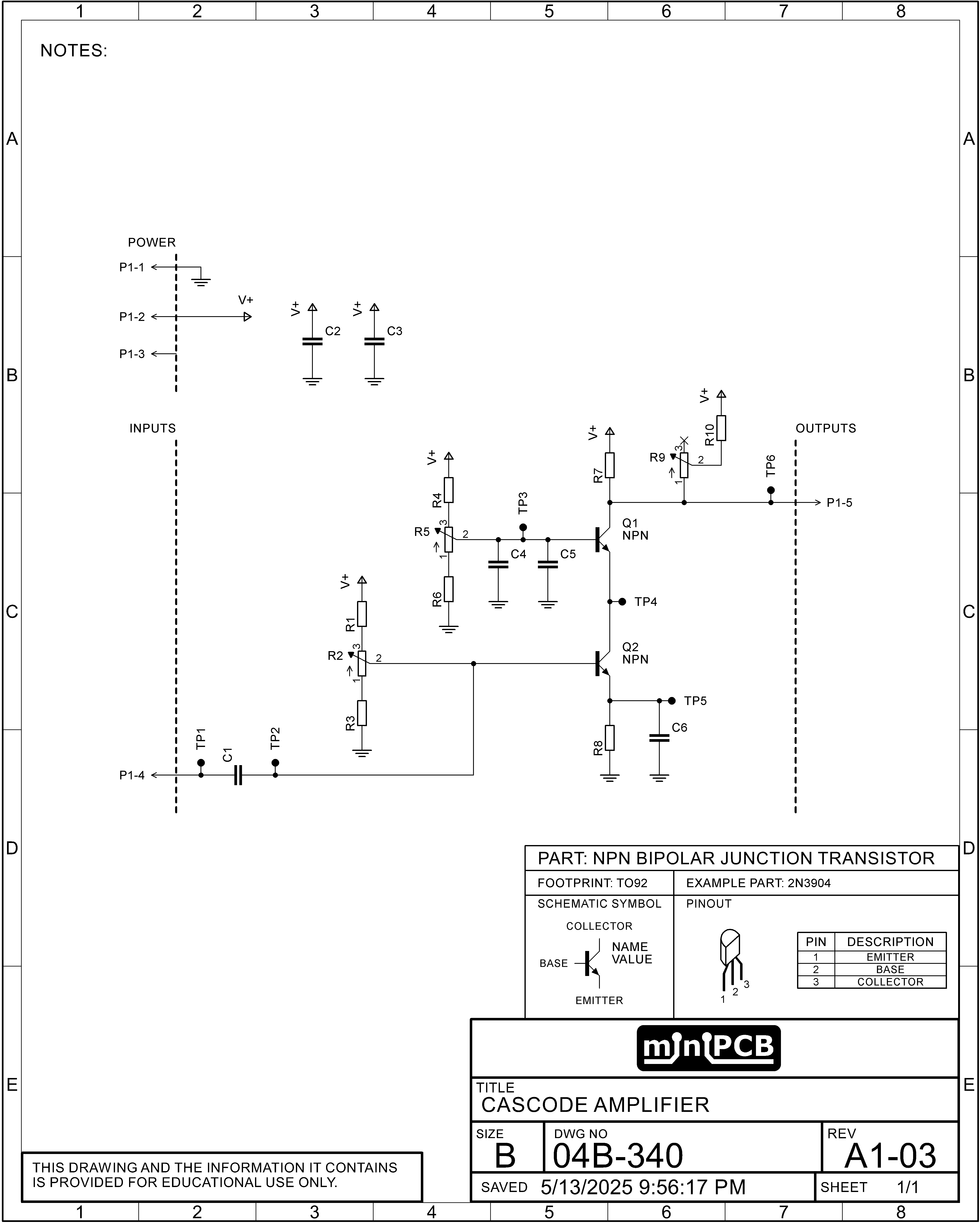Details
Part No: 04B-340
Title: Cascode Amplifier
Board Size: Approx. 50 x 50 mm
Pieces per Panel: 4
Panel Size: 100 x 100 mm (V-scored)
Description
AI Seed
AI Generated
Videos
Schematic

Layout

Downloads
Additional Resources
FMEA
| ID | Item | Failure Mode | Effect | Detection (TP#…) | Test ID | Severity | Occurrence | Detectability | RPN |
|---|
Revision History
| Date | Revision | Description | By |
|---|---|---|---|
| 2025 | - | Initial release | N. Manteufel |